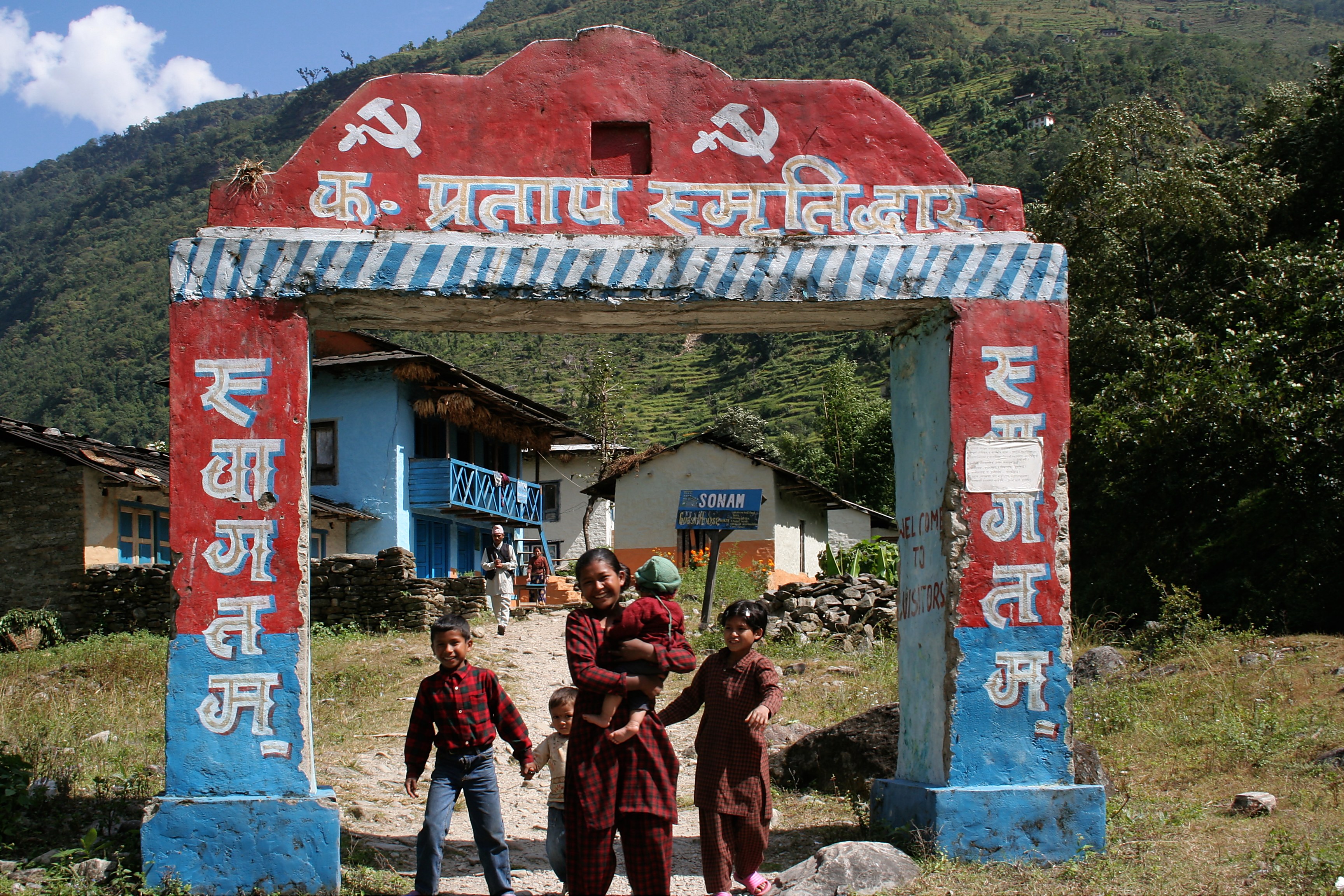A Timeline of Climate Change in Nepal
1951 – The Rana monarchy falls and Nepal opens up to global trade. Nepal joins the United Nations four years later. Liberalized trade improved incomes but also exposed Nepal to global price shocks. UN membership opened the door for political participation in global climate agreements.

Remains of the Rana Dynasty Palaces From WikiCommons
1992 – The United Nations Framework Convention on Climate Change convenes to prevent “dangerous human interference with the climate system”.
1996 – 2006 – A Maoist revolution tears Nepal apart in a civil war. Some villages are governed by the rebels. Over a million Nepalese flee the country.

Maoist Village From WikiCommons
2008 – The Republic of Nepal forms with the Maoist party holding a plurality of seats in parliament. The monarchy is dissolved.
April 2015 – A violent earthquake devastates communities in Nepal. The destruction limits ability to react to climate changes.
Earthquake – 2015 From WikiCommons
April 2016 – The Paris Climate Agreement sets Nationally Determined Contributions to keep climate impact below 2 degrees Celsius. Nepal participates.
Defining the Political Environment
Matthew and Upreti highlight the environmental factors that pushed the civil war in Nepal and their legacies. This recent period is useful to understand climate risks and resilience in Nepal because the conflict reformed human systems and capacities for adaptation. It also highlights sensitive points in local relationships with the environment. Areas under rebel occupation neglected forest conservation during the war, limiting the stewardship of a major energy source. Arable land is already in short supply in Nepal and is disproportionately concentrated in the hands of the wealthy (Matthew and Upreti 146). In a case study shortly after the conflict, Upreti observes that the insurgents seized land from elites to redistribute to the poor, but the poor did not cultivate this land out of fear (Upreti 12). The already scarce land fell into disuse. This context spurred the Maoist uprising and poses socioeconomic risks under climate pressure. Under economic pressure, the Maoists over-harvested medicinal flora (Upreti 11). Future income shocks could trigger similar behavior.
The civil war was partially triggered by a feeling that development had failed the people of Nepal. In terms of infrastructure and services, these grievances continue to exist. If the government is unable to meet current need in rural areas (Matthew and Upreti 149), it may not be prepared to build climate resilience in rural areas. Legitimacy in the post-civil war system is both a means and an end to climate resilience. Many communities in Nepal remain primarily loyal to local leaders despite state/international climate change mitigation projects (Krampe). This course intersects with others in this mosaic because threats to human security systems limit the capacity to adapt. The Nepali civil war was an important event in Nepal’s history because it emerged out of lingering development inequities and continues to resonate in its environmental and political legacies.
Sources:
Upreti, Bishnu “Nepal’s Armed Conflict: Security Implications for Development and Resource Governance” Swiss National Centre of Competence in Research 1-19
Krampe, Florian “Climate Change Mitigation, Peacebuilding, and Resilience” Carnegie Council for Ethics in International Affairs
Matthew, Richard and Upreti, Bishnu “Environmental Change and Human Security in Nepal” MIT Press 137-154
